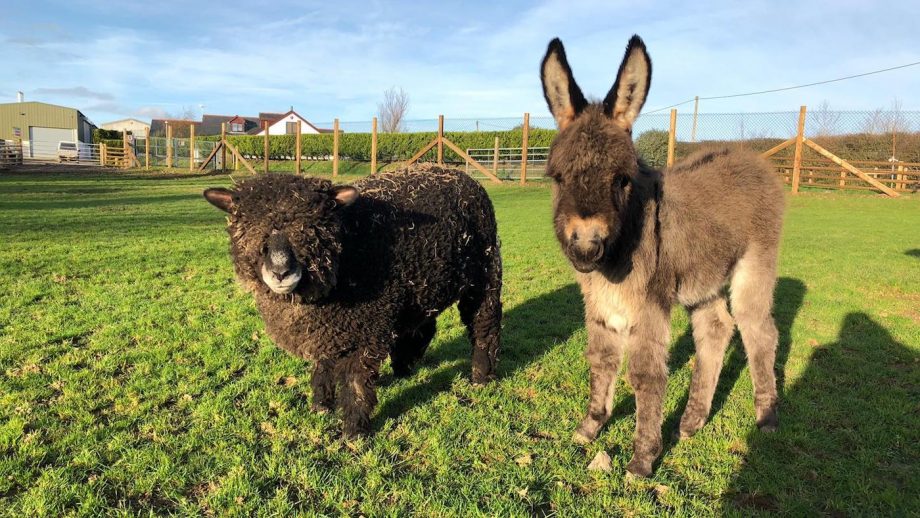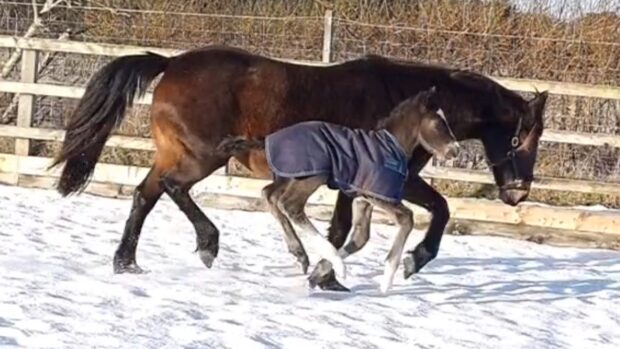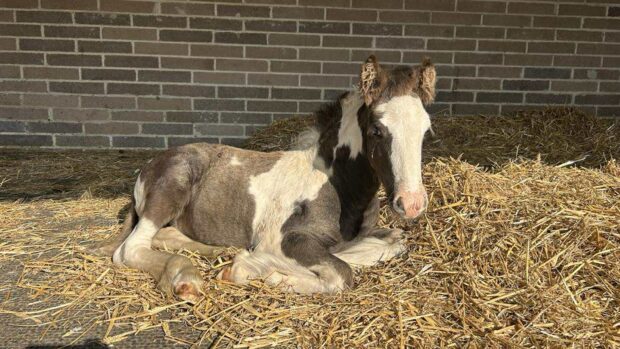The owner of a mare who initially rejected an orphan foal after losing her own wants others in a similar situation to know that through “great darkness you can give light”.
Hertfordshire-based riding coach Miri Hackett’s mare Mo gave birth to her first foal, Mpenzi, (which means “sweetheart” in Swahili) on Saturday (11 May) but the filly died on Monday morning.
Half an hour later, Miri posted on a Facebook group to say she had a mare who could potentially take on an orphaned foal.
“Within 10 minutes I received a message saying a nearby stud had a five-day-old filly, I got in touch with them and within the hour the foal was with me,” Miri told H&H. “At first we put her in the next-door stable to Mo which has windows and Mo was nickering at her and then we took her to the front of Mo’s stable.”
Miri said Mo, who she has owned for 10 years, then turned on the filly.
“She was pretty horrible to her. She had her ears back and tried to bite her – she was just poisonous. It was heartbreaking, in my head it didn’t make sense – I thought ‘why can’t you love this baby’ but they just know it’s not theirs,” she said.
“We took the foal away and came up with a plan. We had to restrain Mo and cover her eye to let the foal drink from her. The foal didn’t notice anything was going on, but it was painful having to make Mo do something she was feeling very uncomfortable with.”
Miri’s vet administered prostaglandin, a hormone naturally produced by a horse that can be given synthetically to help a mare come in to season and can also produce the signs of labour, in the hope Mo would “reset” and accept the filly.
“If they are given a certain dose they are supposed to sweat up, roll, and show signs of labour but Mo didn’t have the reactions she was supposed to. After 30 minutes she sweated up a little and the foal had a drink but we couldn’t leave her with Mo – she hated her. We were so disheartened – it felt like that was our only chance,” said Miri.

Mo and Zawadi
“That night I bucket-fed the foal every two hours. The stud she had come from had bucket-fed her from the start so we didn’t need to use bottles.”
Miri’s vet came back the following evening and administered a different brand of prostaglandin, Lutalyse.
“Within 15 minutes Mo was lathered in sweat, pacing, and doing the flehmen response where they smell the air – it was like she was showing real signs of foaling,” said Miri.
“We took the foal in and initially restrained Mo, but you could just tell she was different. She was quieter, she wasn’t pulling faces. I had wiped some of Mo’s sweat on Didi’s back so she smelt like Mo. We were scared because Mo had had such a strong reaction to her previously, and she’s a feisty horse – but she completely accepted her like her own.”
Continued below…

Orphaned foal saved by nanny goat who stepped in to feed him
‘I’d heard of goats feeding foals but never seen it done – you’ll try anything when you’re desperate’

Orphan miniature donkey foal ‘thrives’ after being adopted by sheep
The foal’s mother died shortly after she was born

Subscribe to Horse & Hound magazine today – and enjoy unlimited website access all year round
Within 30 minutes Mo was nuzzling the filly and then feeding her.
“It felt like a miracle, I’m so grateful to my resourceful vet for everything he did and I want to share my success story so others know if one way doesn’t work – it’s not the end of the road,” said Miri.
“It’s still very hard and I’m very sad I lost my Mpenzi and I’ve had a lot of support from people following my story. I’ve named the filly Zawadi which means ‘gift’ in Swahili. I want people to know sometimes through great darkness you can give light and hope my experience can help another mare or foal in a desperate situation.”
For all the latest news analysis, competition reports, interviews, features and much more, don’t miss Horse & Hound magazine, on sale every Thursday.




